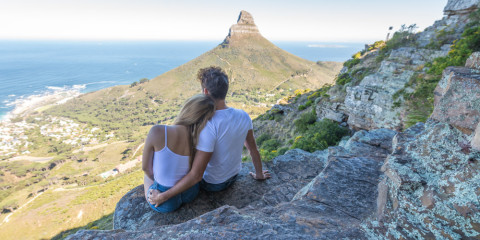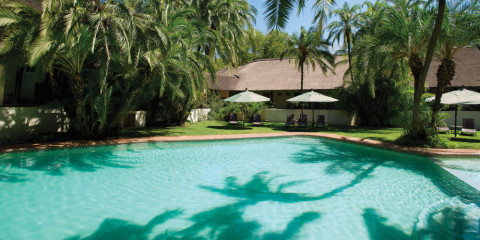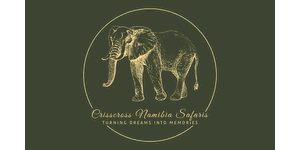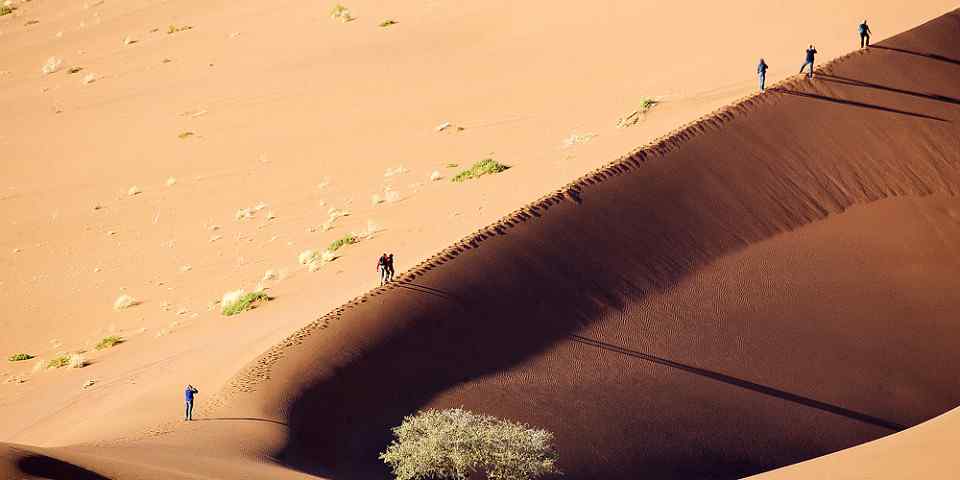Tour Length
Rates in USD $ – Change Currency
Per person, excl. international flightsOperator Rating
Other Tour Features
Filter by Operator
Filter by Accommodation
African Self-drive Safaris & Tours
An African self-drive safari might be just the thing for you if you’re a bit of an adventurer. There’s nothing quite like exploring Africa at your own pace and in your own time. While most safari packages adhere to a predetermined itinerary, a self-drive safari is where you get to take control. Yes, you’ll need to have your campsites and other accommodations booked well in advance, putting some limits on your freedom. But it will be up to you which route you take, how long you stay to watch those lions on a kill, and how long you stop for lunch. That freedom comes with a sense of responsibility – if something happens, you’re the one who’ll need to deal with it. But help is never more than a satellite phone call away and it’s a small price to pay for the sort of safari holiday that you’ll never forget.
-

13-Day South Africa Self-Drive Escape Cape Town & Safari
$5,599 to $6,999 pp (USD)
South Africa: Self-driveLuxuryLodge & Guest House
You Visit: Cape Town (Start), Winelands, Oudtshoorn (Garden Route), Garden Route, Kwandwe GR, Port Elizabeth International Airport, Port Elizabeth (End)

Wayfairer Travel
5.0/5 – 203 Reviews
-

14-Day Secret Namibia - a Luxury Hidden Gems Escape
$11,880 pp (USD)
Namibia: Self-driveLuxuryLodge & Private Villa
You Visit: Windhoek (Start), Kalahari Region, Sossusvlei (Sand Dunes), Swakopmund (City), Damaraland, Etosha NP, Windhoek (End)

Viatu
5.0/5 – 144 Reviews
-

7-Day The Namibia Explorer - Dunes to Wildlife
$2,695 pp (USD)
Namibia: Self-drive
Mid-range Lodge & Guest HouseYou Visit: Windhoek (Start), Sossusvlei (Sand Dunes), Swakopmund (City), Twyfelfontein (Rock Art), Etosha NP, Windhoek Airport (End)

Southbound Tours
5.0/5 – 29 Reviews
-
Top Rated Operator

4-Day Kwa Maritane Lodge Fully Inclusive Safari Package
$1,080 to $1,198 pp (USD)
South Africa: Self-drive
Mid-range LodgeYou Visit: Johannesburg (Start), Pilanesberg GR, Johannesburg (End)

MoAfrika Tours
4.9/5 – 4,189 Reviews
-
![10-Day Garden Route Adventure Tour]()
10-Day Garden Route Adventure Tour
$2,456 pp (USD)
South Africa: Self-drive
Mid-range HotelYou Visit: Port Elizabeth (Start), Addo Elephant NP, Bloukrans Bridge (Highlight), Tsitsikamma (Garden Route NP), Hermanus (Whales), Gansbaai (Town), Cape Town (City), Cape Town Airport (End)

Africa Incoming
4.8/5 – 25 Reviews
-
Best Seller
![10-Day Namibia Popular Classic Self-Drive Safari]()
10-Day Namibia Popular Classic Self-Drive Safari
$2,797 to $3,014 pp (USD)
Namibia: Self-drive
Mid-range Lodge & Guest HouseYou Visit: Windhoek (Start), Otjiwa Game Farm, Etosha NP, Twyfelfontein (Rock Art), Swakopmund (City), Sossusvlei (Sand Dunes), Windhoek (City), Hosea Kutako Airport (End)

Jangwa Tours and Safaris
5.0/5 – 23 Reviews
-
![14-Day Classic Namibia Self-Drive]()
14-Day Classic Namibia Self-Drive
$5,997 to $6,284 pp (USD)
Namibia: Self-drive
Mid-range Lodge & Guest HouseYou Visit: Windhoek (Start), Okonjima NR, Etosha NP, Grootberg Plateau (Damaraland), Twyfelfontein (Rock Art), Swakopmund (City), Sossusvlei (Sand Dunes), Windhoek (End)

Far and Wild Travel
5.0/5 – 6 Reviews
-

8-Day Self-Drive Mana Pools & Chitake Springs
$1,768 pp (USD)
Zimbabwe: Self-driveBudgetCamping & Guest House
You Visit: Harare (Start), Mana Pools NP, Chitake Springs (Mana Pools NP), Harare (End)

Mana Pools Tourism Services
5.0/5 – 42 Reviews
-
![15-Day Victoria Falls & Namibia Safari]()
15-Day Victoria Falls & Namibia Safari
$4,746 to $5,243 pp (USD)
Namibia & Zimbabwe: Self-drive
Mid-range Lodge & Tented CampYou Visit: Victoria Falls (Start), Chobe River, Chobe Riverfront (Chobe NP), Kwando River, Bwabwata NP (Zambezi Region), Popa Falls (Zambezi Region), Mahango GR (Zambezi Region), Eastern Etosha NP, Waterberg Plateau, Windhoek (City), Windhoek Airport (End)

Firefinch Safaris & Car Hire
5.0/5 – 25 Reviews
-
![12-Day Self-Drive Namibia Attractions Safari]()
12-Day Self-Drive Namibia Attractions Safari
$5,695 pp (USD)
Namibia: Self-drive
Mid-range Lodge & Tented CampYou Visit: Windhoek (Start), Kalahari Region, Namib-Naukluft NP (Namib Desert), Swakopmund (City), Twyfelfontein (Rock Art), Etosha NP, Eastern Etosha NP, Okonjima NR, Windhoek (End)

Nature Travel Namibia
4.9/5 – 208 Reviews
-
![7-Day Self Drive - Etosha Animal Kingdom]()
7-Day Self Drive - Etosha Animal Kingdom
$1,755 pp (USD)
Namibia: Self-drive
Mid-range LodgeYou Visit: Windhoek (Start), Okonjima NR, Etosha NP, Eastern Etosha NP, Waterberg Plateau, Windhoek Airport (End)

Desert Air Africa Safaris
5.0/5 – 38 Reviews
-
![9-Day Wonders of Namibia Self-Drive Safari Tour]()
9-Day Wonders of Namibia Self-Drive Safari Tour
$2,822 pp (USD)
Namibia: Self-drive
Mid-range Lodge & Guest HouseYou Visit: Windhoek (Start), Sossusvlei (Sand Dunes), Swakopmund (City), Etosha NP, Waterberg Plateau, Windhoek (End)

Africa Zim Travel & Tours
4.9/5 – 212 Reviews
-
Top Rated Operator
![11-Day Cape Town, Garden Route, Big 5 Safari (Self-Drive)]()
11-Day Cape Town, Garden Route, Big 5 Safari (Self-Drive)
$3,678 to $4,121 pp (USD)
South Africa: Self-driveLuxuryLodge & Hotel
You Visit: Cape Town (Start), Knysna (Garden Route), Lalibela Game Reserve, Port Elizabeth (End)

Pembury Tours
5.0/5 – 521 Reviews
-
![12-Day Namibia Luxury Self Drive Experience]()
12-Day Namibia Luxury Self Drive Experience
$6,054 pp (USD)
Namibia: Self-driveLuxuryLodge & Hotel
You Visit: Windhoek (Start), Okonjati GR, Onguma GR, Western Etosha NP, Kunene Region, Damaraland, Swakopmund (City), Sossusvlei (Sand Dunes), Kalahari Region, Hosea Kutako Airport (End)

CrissCross Namibia Safaris
5.0/5 – 62 Reviews
-
Best Seller
![13-Day Highlights of Namibia Tour]()
13-Day Highlights of Namibia Tour
$6,999 to $7,999 pp (USD)
Namibia: Self-driveLuxuryLodge & Tented Camp
You Visit: Windhoek (Start), Namib-Naukluft NP (Namib Desert), Swakopmund (City), Damaraland, Etosha NP, Okonjima NR, Windhoek (End)

Wayfairer Travel
5.0/5 – 203 Reviews
-

3-Day Eco-Friendly Etosha Self-Drive Safari
$593 pp (USD)
Namibia: Self-driveLuxuryLodge
You Visit: Windhoek (Start), Etosha NP, Windhoek Airport (End)

Viatu
5.0/5 – 144 Reviews
-
Top Rated Operator

4-Day Bakubung Bush Lodge Fully Inclusive Safari Package
$1,054 to $1,183 pp (USD)
South Africa: Self-driveLuxuryLodge
You Visit: Johannesburg (Start), Pilanesberg GR, Johannesburg (End)

MoAfrika Tours
4.9/5 – 4,189 Reviews
-
![11-Day South Africa Self-Drive Adventure Tour]()
11-Day South Africa Self-Drive Adventure Tour
$2,322 pp (USD)
South Africa: Self-drive
Mid-range Lodge & HotelYou Visit: Port Elizabeth (Start), Tsitsikamma (Garden Route NP), Knysna (Garden Route), Plettenberg Bay (Garden Route), Garden Route GR (Garden Route), Hermanus (Whales), Cape Town (City), Franschhoek (Winelands), Cape Town Airport (End)

Africa Incoming
4.8/5 – 25 Reviews
-
![4-Day Etosha Wild Escape Camping Safari]()
4-Day Etosha Wild Escape Camping Safari
$1,548 to $1,766 pp (USD)
Namibia: Self-driveBudgetCamping
You Visit: Windhoek (Start), Western Etosha NP, Windhoek Airport (End)

Southbound Tours
5.0/5 – 29 Reviews
-
![8-Day Namibia at a Glance Self-Drive]()
8-Day Namibia at a Glance Self-Drive
$2,500 pp (USD)
Namibia: Self-drive
Mid-range Lodge & Guest HouseYou Visit: Windhoek (Start), Sossusvlei (Sand Dunes), Swakopmund (City), Sandwich Harbour (Highlight), Twyfelfontein (Rock Art), Etosha NP, Windhoek Airport (End)

Jangwa Tours and Safaris
5.0/5 – 23 Reviews
7 Questions About Self-drive Safari Tours

Answered by
Anthony Ham
Anthony is a photographer and writer for travel magazines and multiple Lonely Planet guides. For the past 25 years, he has spent a significant proportion of every year exploring the continent, and likes nothing better than driving a 4x4 out into the wilds of southern and East Africa.› More about Anthony
7 Questions About Self-drive Safari Tours
 Anthony Ham
Anthony Ham
Why should I choose a self-drive safari?
“A self-drive safari is the ultimate in African exploration. This kind of tour has the effect of sharpening the senses – you’re a participant in Africa’s drama, not merely an observer. You’re the one who controls the speed, and who decides which fork in the road to take and how long to linger. Every time you get out of your vehicle there’s nothing between you and the wild lands you’ve come to see. It would certainly be easier to let someone else take control and make the decisions, but the self-drive journey is a remarkable experience. As a general rule, self-drive safaris tend to be cheaper than other kinds of safaris. The cost of vehicle rental is expensive, but if you are on a self-drive camping safari you will save greatly on accommodations costs.”
1Which countries are most geared to self-drive safaris?
“Self-drive safaris are possible in most African countries, but South Africa, Botswana and Namibia are probably the best. South Africa usually involves a combination of a safari with other tourist attractions and therefore offers less ‘wild’ self-drive tours. On the other hand, Kruger National Park is probably the most popular and easiest park for self-drive safaris and great for first-timers. South Africa, Botswana and Namibia have a long history of self-drive exploration, well-maintained roads and tracks, and very little traffic, so they’re ideal for those on their first such expedition in Africa. Zambia comes not far behind, although there’s heavy traffic in some parts of the country, and some roads can be in bad condition. And provided you take back roads wherever possible, there is nothing to stop you from self-driving in Kenya, Tanzania and Zimbabwe. Remember, however, that traffic can be heavy in all of these countries, at least on major roads.”
2Do I need 4x4 experience?
“For most self-drive safaris, it is strongly recommended that you take a 4x4 course, preferably in the vehicle you will be using on your safari. South Africa is a partial exception – most parks, including Kruger, have tarred roads, although Kgalagadi Transfrontier Park is one park where gravel roads are the norm. By its very nature, a self-drive safari is a serious undertaking. Working out how to engage the vehicle’s 4x4 or re-inflating tires are things not best done with darkness fast approaching in the middle of the animal-rich Okavango Delta. Some rental companies and self-drive safari operators can arrange such day courses. The experience and confidence you will gain will serve you well out on the trail. Most operators and vehicle-rental companies provide an overview of driving when you pick up the vehicle. If you plan to stick to main roads and main safari trails through parks and reserves, you may be fine with only this information.”
3What type of vehicle can I expect?
“Most 4x4 safari vehicles have all the essential elements of hard-core expedition cars. Typical vehicles include a Ford Ranger, Toyota HiLux or other off-road workhorse. Most will be manual, although automatic transmission vehicles are also possible. Some will be single cab (for two people), while others are dual cab (for four or, a tight squeeze, five people). Unless you’re driving from one lodge or tented camp to another, you’ll likely have a 4x4 camper. If that’s the case, your sleeping quarters will consist of a pop-top roof, or a rooftop tent that you’ll need to set up every night. In the back there will also be a fridge and/or freezer as well as a gas stove, cooking equipment and eating utensils. The better vehicles will have a portable shower, lighting, a shade awning and a mini-ladder. And, importantly, a toolkit with basic tools and essential elements such as rope, a winch, electric pump for inflating tires and other necessary items.”
4What should I do when I encounter animals?
“Stay in your vehicle. Never get out of your vehicle if there are animals around. Ever. Most national parks have speed limits that rarely exceed 40km (25mi) per hour, and in many instances you’ll want to drive even slower than that. Some wild animals can be skittish and unpredictable around vehicles, so be ready to stop suddenly whenever animals are around (and even when you just suspect they might be nearby). You’ll quickly discover how close is too close. Approach slowly and watch for any signs that the animal in question may be becoming agitated. Never get between a mother and her offspring. Remember, too, that some animals such as rhinos have poor eyesight and are liable to charge if they sense (or even imagine) a threat. Don’t do anything that changes the shape of the vehicle in an animal’s eyes, such as climbing onto the roof, dangling limbs outside the car, or opening doors. It’s always better to enjoy an animal encounter from a reasonable distance than it is to scare off that animal by trying to get too close. In general, always drive with great care. Slow down to avoid accidents. Stop and admire the view. And be prepared to wait for animals to pass by, do something interesting or come down to the waterhole to drink.”
5How much will this safari cost?
“The price of a vehicle alone usually begins at around US$100 per day. However, it can go above US$170 per day, sometimes significantly so, for a fully equipped 4x4 camper. Remember, however, that this is the cost per vehicle, to be shared between all of those who will be traveling in the vehicle. In addition to this per-day cost is petrol, camping fees and/or accommodations costs, satellite phone and food supplies, all of which can vary significantly from country to country. Some operators will give you a rate that includes most of these, although petrol is usually considered an additional cost. The range of self-drive safari packages is vast.”
6What should I consider when choosing a self-drive trip?
“The biggest question is whether self-driving is for you. The experience of driving yourself around Africa may be exciting, but it’s not for everyone. If this is supposed to be a relaxing holiday, consider a guided safari. On a self-drive camping safari, you’ll spend quite a bit of time each day setting and packing up camp, and cooking, not to mention sleeping on what are usually thin mattresses. You also need to be realistic in what you hope to achieve, making sure that daily distances are sensible. Be sure to build in a few rest days along the way. Breaking down in the middle of nowhere without a telephone signal is a great way to ruin your trip. Make sure that you carry a satellite phone with you.”
7











_774_5c10b301bc706.gif)














